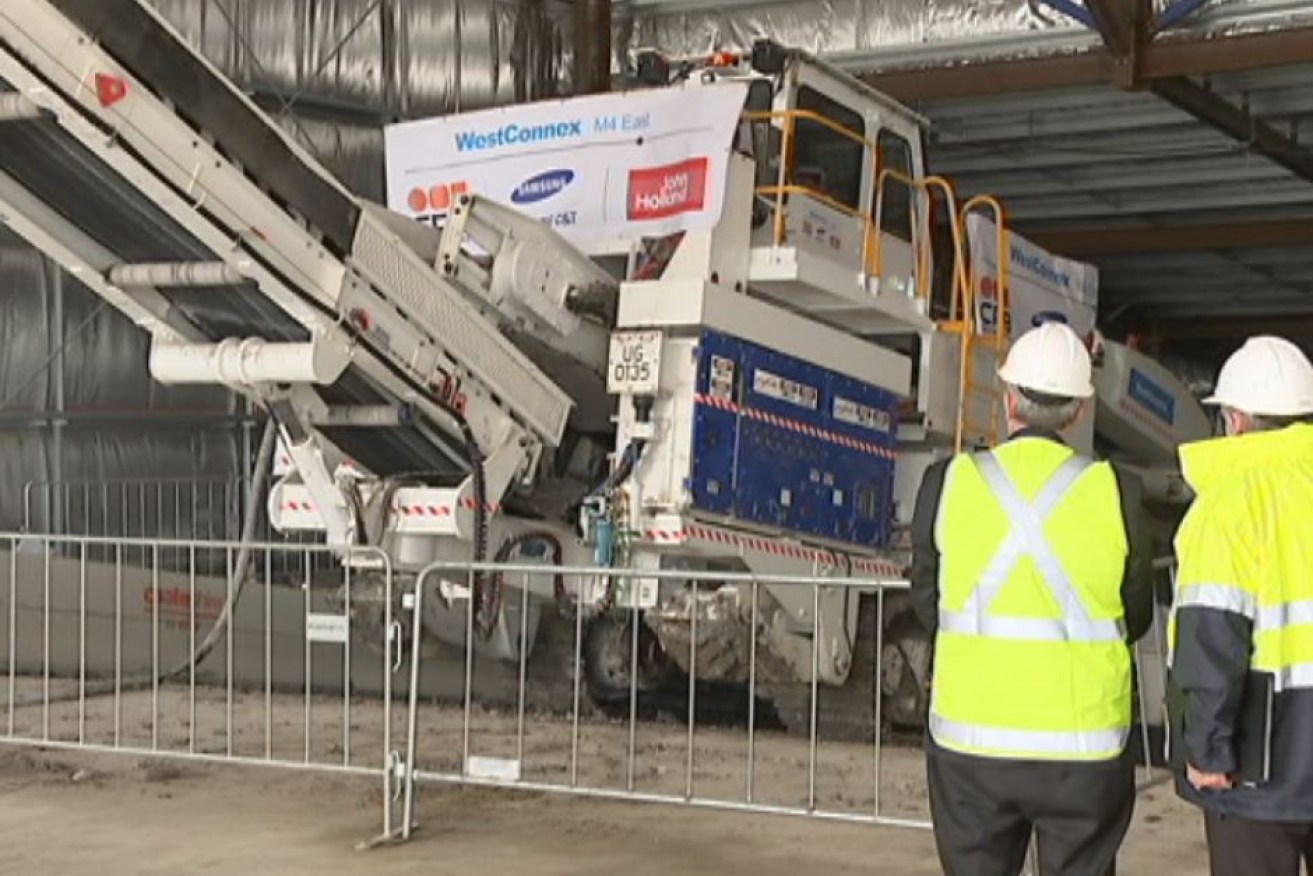Economy grows 3.3 per cent over past year on ‘secret fiscal stimulus’

Infrastructure projects, such as Sydney's WestConnex, boosted GDP. Photo: ABC
Australia’s economy grew by 3.3 per cent over the year to June, matching economist forecasts and putting GDP growth slightly above average levels.
June quarter growth of 0.5 per cent, seasonally adjusted, was half the pace of growth seen in the March quarter.
The Bureau of Statistics said a continued fall in resources sector construction was offset by public investment, such as in transport infrastructure projects, which contributed 0.7 percentage points to the quarter’s economic growth.
Growth in gross domestic product (GDP) was also supported by continued growth in household and government consumption expenditure, which contributed 0.2 and 0.3 percentage points to growth respectively.
Capital Economics’ chief Australian economist Paul Dales said household spending growth halved between the first and second quarters, in a sign that low wages are beginning to bite.
“Thankfully, though, the government has come to the rescue,” he continued.
“Government consumption rose by 1.9 per cent quarter-on-quarter and public investment increased by 15.5 per cent quarter-on-quarter.
“This meant that the public sector added a total of 1 percentage point to the quarterly rate of GDP growth (up from +0.3 in the first quarter) and 1.2 percentage points to the annual rate (up from +0.8).
“In other words, things would be weaker if it wasn’t for this secret fiscal stimulus.”
Treasurer Scott Morrison explained the growth in public consumption as being primarily due to the listing of new drugs on the Pharmaceutical Benefits Scheme (PBS) and the purchase of Chinook military helicopters.
However, he embraced the rise in public infrastructure spending.
“Infrastructure spending remains a core part of our national economic plan for jobs and growth,” Mr Morrison told reporters after the data release.
“It is a core part of how we are going to improve the productive capacity of our economy.”
“And I absolutely agree with the sentiment that you want to encourage not just public investment into these things but private investment into these things which boost our capacity on productive assets, not passive assets.”
This rising consumption resulted in a strong growth of imports during the quarter, while a slowing rate of growth for exports saw Australia’s trade position detract 0.2 percentage points from June quarter GDP growth.
Terms of trade rebound boosts national income
The June quarter National Accounts also brought some welcome news for businesses, households and governments, with Australia’s terms of trade — the price the nation receives for its exports relative to what it pays for imports — rising for the first time in two-and-a-half years.
The terms of trade rose 2.3 per cent in seasonally adjusted terms, providing a boost to corporate profits.
It also drove a 1 per cent quarterly rise in trend real net national disposable income, which outpaced the rise in real GDP.
Although, the annual rise of 2.1 per cent in real net national disposable income still trailed the trend 3.1 per cent annual rise in GDP.
The Bureau of Statistics noted the worse news for workers, however, with compensation for employees rising by a “modest” 0.5 per cent in the June quarter and just 3.1 per cent over the past year.
That was due to very weak (0.7 per cent) annual growth in hours worked and the slow 2.1 per cent rise in wages over the past year.
— ABC








